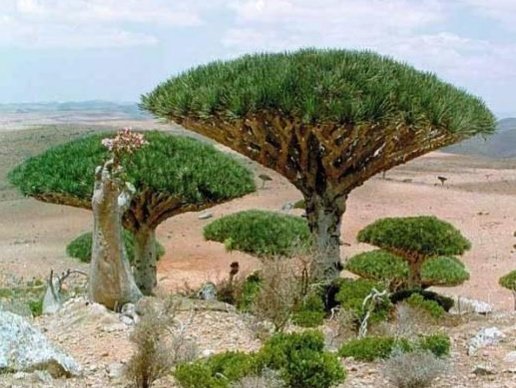Dragon Tree comes from the Socotra Islands. Also called the Dragon Blood Tree and the Socotra Dragon Tree. This tree is one of the strangest trees in the Socotra archipelago, with an umbrella-like shape. This plant is also known as Suji Socotra and Dragon Blood Tree.

This flora is called so because of the red sap produced by this plant.
First published by Isaac Bayley Balfour, in 1882. When noted, this tree was once an icon in Windows as a Network icon. Dragon's blood is taken from the color of the red sap, and can be used as medicine or dye dye.
Dragon trees are remnants of sub-tropical forests that died millions of years ago in the Pliocene era. This tree looks like a combination of mushrooms, umbrellas, and cranial tissue, which is strange. Trees have long been valued for thousands of years for their bright red resin. This resin is produced when the tree is pierced. Because the resin that comes out is red, this tree is also known as the dragon blood tree.
For thousands of years, this dragon's blood has been used as traditional medicine, ingredients in alchemy for ritual and magic, and red coloring. This resin has also been used for violin varnishes, as toothpaste, as an adhesive, as a medicine for diarrhea, in photoengraving, incense, to treat post-partum hemorrhage, and as body oil.
Dragon trees are monocots: they do not have xylem and phloem like most trees or branches that extend from the trunk; everything grows from the very top, like a palm tree. The long, thin and stiff leaves that they produce, only grow from the tip of the youngest branches and last for three to four years. The stem and branches are thick, when the buds at the ends of the branches stop growing, the branches will divide into two, creating a density, patterns of surreal branches.
This pattern is a very functional appearance, to create a dense and shady branching, in Socotra which is hot and dry, It is intended to protect the soil around the tree and to reduce evaporation from the soil, thus providing optimal living conditions for each seed in underneath it. Small fruits are produced, generally eaten by birds, which then spread the seeds to other places.




Beautiful Pics !